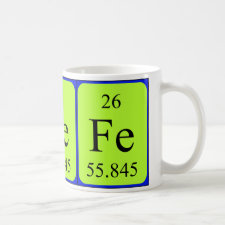
Authors: Kang YG, Vu HC, Le TT, Chang YS
Article Title: Activation of persulfate by a novel Fe(II)-immobilized chitosan/alginate composite for bisphenol A degradation.
Publication date: 2018
Journal: Chemical Engineering Journal
Volume: 353
Page numbers: 736-745.
DOI: 10.1016/j.cej.2018.07.175
Alternative URL: http://www.sciencedirect.com/science/article/pii/S138589471831427X
Abstract: In this study, a novel Fe(II) immobilized chitosan/alginate composite (Fe-Chitoal) was prepared via a simple crosslinking reaction to activate persulfate (PS) to degrade bisphenol A (BPA). The newly synthesized Fe-Chitoal was characterized by scanning electron microscopy, energy dispersive spectroscopy, Fourier transform infrared spectroscopy, and X-ray photoelectron spectroscopy, which indicated that Fe was successfully imprinted into the composite. The PS/Fe-Chitoal system demonstrated a much higher removal efficiency of BPA (99.5%) than the conventional PS/Fe(II) system (69.2%) with a negligible amount of Fe ions released into the solution. The effects of different experimental conditions, including the concentration of PS, concentration of Fe-Chitoal, and pH, on the removal of BPA were also investigated. The removal rate increased with increasing amounts of PS and Fe-Chitoal, and a high removal efficiency was maintained at a pH of 2-10. The PS/Fe-Chitoal system was rarely affected by high concentrations of anions (Cl-, SO42-, NO3-, and HCO3-), and the composite catalyst could be reused in a synthetic sewage solution. To simply separate the material, a Fe-Chitoal mesh bag was fabricated, which showed a consistent catalytic reactivity toward PS and BPA removal suggesting practical field applications
Template and target information: iron ion, ferrous ion, Fe(II)
Author keywords: bisphenol A, Advanced oxidation processes, Persulfate activation, chitosan, alginate



Join the Society for Molecular Imprinting

New items RSS feed
Sign-up for e-mail updates:
Choose between receiving an occasional newsletter or more frequent e-mail alerts.
Click here to go to the sign-up page.
Is your name elemental or peptidic? Enter your name and find out by clicking either of the buttons below!
Other products you may like:
 MIPdatabase
MIPdatabase









